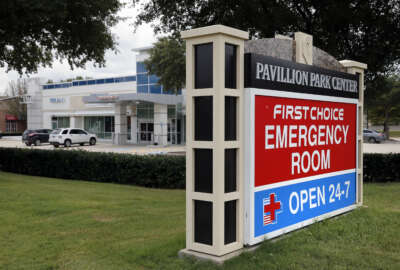
ISO soulmate with good health plan
Savvy single federal workers looking for both love and a low-cost health plan can kill two birds with one stone during the health insurance open season. With...
Savvy single federal workers looking for both love and a low-cost health plan can kill two birds with one stone during the health insurance open season. With careful planning and a little luck, they may be able to find the perfect mate for life and score a great health plan at the lowest possible premium. The secret: Cleverly wording their dating site profiles to snare a fellow civil servant whose status allows them to pay less for the same insurance coverage. Money saved by connecting with the best possible health premium partner could be used for romantic dinners and exotic vacations — or to cover their plans deductible fees.
Non-federal workers who marry a civil servant are also eligible for one of the 30 to 40 plans in the Federal Employee Health Benefits Program where they will get excellent coverage via a family or self-plus one plan. And if it doesn’t work out and they divorce down the line, they can, courts willing, continue coverage for life. The downside is their premiums as a former spouse will go up 70-75%. Yet another plus for staying married. Especially to a civil servant!
Knowing how to find the best life partner is especially important in places with large concentrations of federal/postal workers during the health insurance hunting season, which runs until Dec. 9. Places like the Washington D.C. metro area, Norfolk, Baltimore, Ogden, Huntsville, Raleigh-Durham, Oklahoma City, San Diego, Cincinnati and other places that are chock full of federal workers and/or retirees. The prime target: A fun-loving, easy-going, likes to travel and take long walks on the beach civil servant with the Securities and Exchange Commission, the U.S. Postal Service or the Federal Deposit Insurance Corporation. Workers in those agencies, plus a few others, are eligible for the same 30 to 40 plans as other feds, but at lower premiums. They pay less than employees at Commerce, Defense, the Office of Personnel Management and other agencies because of either union contracts or the fact that their agencies income comes from customers rather than appropriations from Congress.
Thanks to union contracts, USPS worker — but not retirees — premiums are several percentage points less than those of other workers. The same is true for employees of the SEC and the FDIC.
A postal worker with a self-plus one plan would will pay $3,790 next year for Kaiser standard and $4,460 for the Blue Cross-Blue Shield basic plans. A regular, non-postal, federal worker with the same self-plus one coverage will pay $3,940 for the Kaiser standard plan and $4,640 for the Blue Cross basic. The Blue Cross standard plan next year will cost a regular federal worker or retiree $6,950 while a postal worker will pay $6,220 for the same self-plus one BC-BS plan.
People who pay the full cost, including the government share, like certain ex-spouses of feds, will pay $11,2230 for the Kaiser plan and $20,500 for the Blue Cross basic self-plus one plan. Those premiums, compared to what federal workers and retirees pay, shows how big the government contribution is. In most cases Uncle Sam will pay around two-thirds of the total premium for workers and annuitants. People who have to pay the full premium include former spouses who have qualifying court orders and temporary employees who have worked for a full year.
Workers leaving the government for any reason, other than retirement, can continue coverage for 18 months, but they will pay the full premium. Children reaching age 26, unless severely handicapped, are no longer eligible for coverage under their parents FEHBP plan. But they may get coverage under their own name for up to 36 months. Former spouses without a qualifying court order may enroll in the FEHBP for 36 months paying the full premium.
Romance is nice. But lifetime health insurance is great. Choose your self-plus one carefully.
Nearly Useless Factoid
By Alazar Moges
Cowboys are remembered as some of the toughest and coolest guys of their era. But despite how we portray their legends in movies, most of the actual responsibility of a real farm cowboy was rounding up cattle. But they have been around really for some time. So what was there downfall? Barbed wire fences appeared in in the 1860’s and quickly spread as an effective means of containing cattle and horses, thus rendering the cowboy relatively useless and slowly making them extinct.
Source: Fence Workshop
Copyright © 2025 Federal News Network. All rights reserved. This website is not intended for users located within the European Economic Area.
Mike Causey is senior correspondent for Federal News Network and writes his daily Federal Report column on federal employees’ pay, benefits and retirement.
Follow @mcauseyWFED





